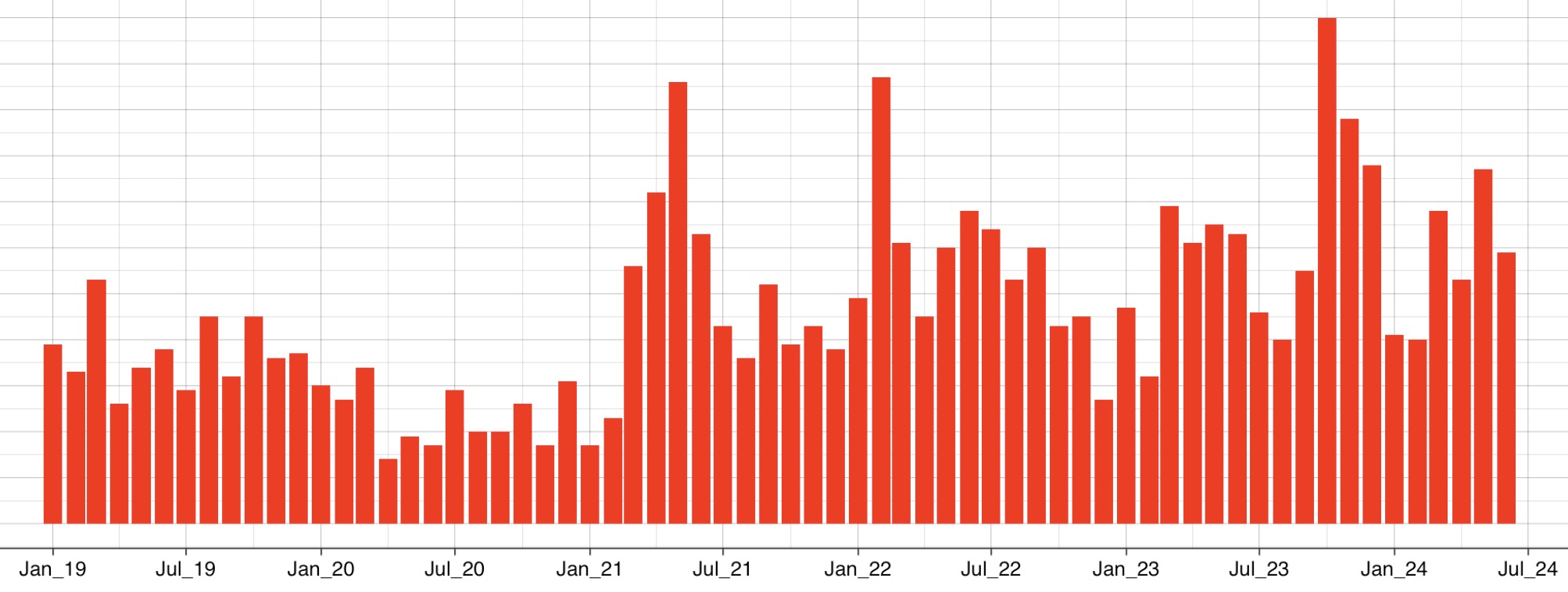
New York State


Spatial Distribution of Hospital Beds in New York State
June 18, 2025
gis hospitals New York State Health Care hospital capacity health care access
Volume of Reported Patient Discharges by Health Care Facilities in New York State
June 16, 2025
Hospitals health care New York State
New York State Food Establishment Inspection Maps
June 14, 2025
food safety environemental health New York State Public Health Restaurant Inspections GIS
New York State Budget Analysis
June 13, 2025
New York State State Budget Fiscal Analysis Public Spending Revenues and ExpendituresNew York Flu Watch: Real-Time Tracking and Analysis of Influenza Data
May 23, 2025
communicable diseases data visualization epidemiology influenza New York State Public Health
New York State Health Facility Maps
May 20, 2025
health care Healthcare Facilities GIS New York State Public Health Planning Healthcare Access
Birth Defect Trends in New York State
December 31, 2024
birth defects maternal and child health epidemiology public health New York State disease incidence epidemiology
Opioid Overdoses in New York (Provisional Data)
June 1, 2025
data visualization epidemiology New York State opioids overdose
Birth Counts and Fertility Rates in New York State
September 3, 2024
Births Fertility Rates New York State Demographic Analysis Maternal and Child Health
All-Cause Mortality in New York State
September 1, 2024
mortality New York State New York City All-Cause Mortality CDC WONDER DataNew York Hospital Bed Capacity
July 22, 2024
health care delivery Hospitals New York City New York State Public Health PreparednessInfluenza Vaccination Among New York Healthcare Workers
February 18, 2024
health care delivery New York State influenza immunization patient safety epidemiology communicable diseasesHospital-Acquired Infections In New York State
February 18, 2024
health care New York State variation Hospitals patient safetyNew York Weekly Death by Select Causes (2014 to Present)
November 14, 2023
data visualization epidemiology New York State Public HealthCOVID-19 Predictions for New York State
September 7, 2023
epidemiology COVID-19 communicable diseases New York State data science predictive modeling machine learning Public Health PracticeAnalysis of Immunization Levels Among Schools in New York State
September 1, 2023
epidemiology data visualization immunization New York State vaccine
Prioritizing Student Health: My Published Op-Ed on Indoor Air Quality in NY Schools
February 3, 2023
environemental health Public Health Practice communicable diseases schools New York State air quality

